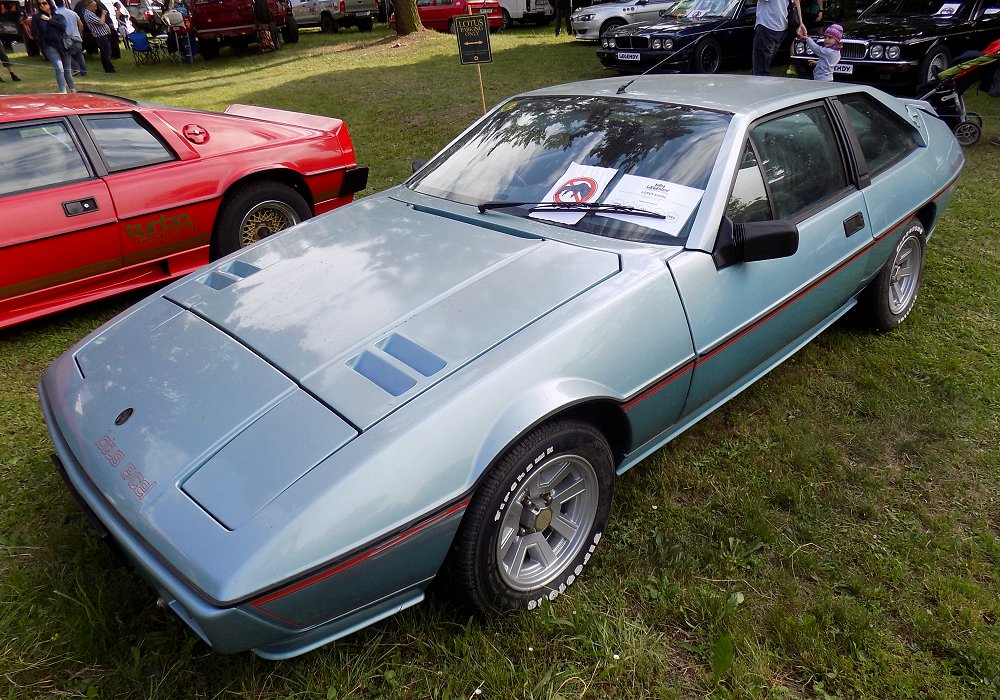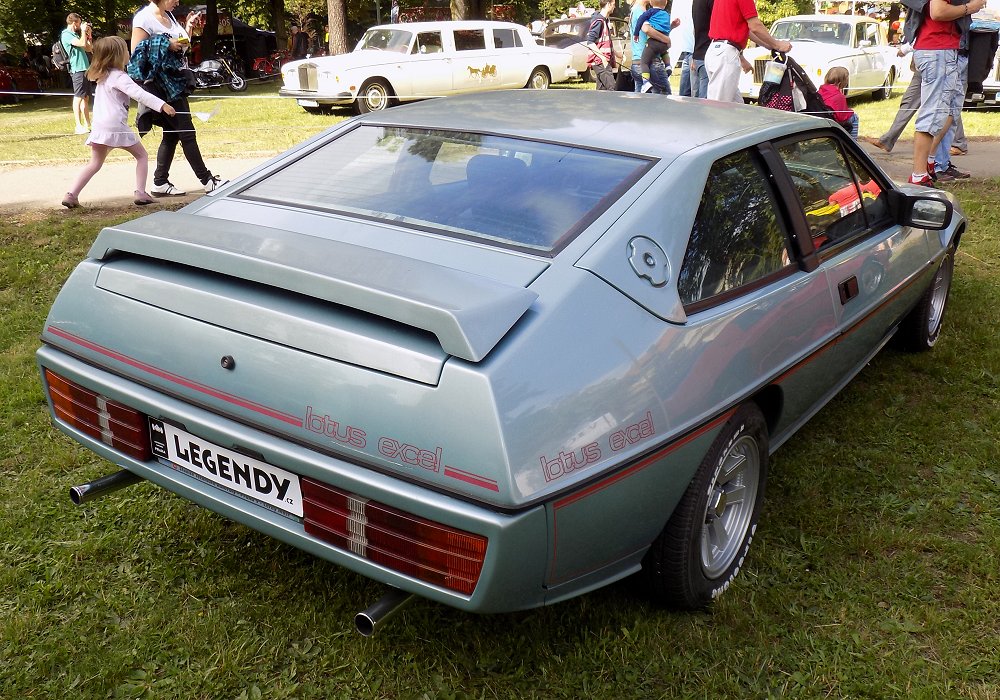Description
The Lotus Excel was introduced in 1982 as the successor to the Eclat, representing the final evolution of Lotus’s front-engined, rear-wheel-drive grand touring design. It retained the same basic structural layout of a glass-reinforced plastic body mounted on a steel backbone chassis but incorporated extensive revisions throughout, most notably through a collaboration with Toyota. This partnership marked a turning point for Lotus, as Toyota supplied key components including the gearbox, driveshafts, differential, and various electrical and interior fittings. The result was a car that preserved the hallmark agility and lightweight engineering of earlier Lotus models while achieving a new level of reliability and refinement.
The Excel was powered by the Lotus Type 912 engine, a 2.2-litre all-aluminium, sixteen-valve, twin-cam four-cylinder unit producing between 160 and 180 horsepower depending on the model year and tuning. The early Excel and Excel SE models used Dell’Orto carburettors, while later versions adopted electronic ignition and improved fuel systems. Power was sent to the rear wheels through a Toyota W58 five-speed gearbox, widely praised for its smooth and precise shift quality. The car’s lightweight construction, at around 1,150 kilograms, combined with its aerodynamic body and finely tuned suspension, gave it remarkable performance and poise. Acceleration from 0–60 mph took around 7 seconds, and top speed exceeded 130 mph, putting it firmly within the realm of contemporary European grand tourers.
Lotus made significant improvements to build quality and refinement with the Excel. The chassis was stiffened, noise insulation was enhanced, and the suspension geometry was re-engineered to improve both ride comfort and high-speed stability. The handling balance was among the best of any front-engined car of its time, with precise steering feedback and near-perfect weight distribution. The collaboration with Toyota was crucial not only for mechanical reliability but also for the perception of quality that had previously eluded the Elite and Eclat. The Excel’s brakes, steering, and drivetrain components were robust and easy to service, helping to make it one of the most usable and dependable Lotus road cars ever built.
Externally, the Excel featured cleaner and more modern styling than the Eclat, though it still bore the familiar wedge profile characteristic of the 1970s Lotus design language. The proportions were slightly altered, with a wider track, flared wheel arches, and smoother detailing around the bumpers and headlights. The overall effect was more muscular and cohesive, giving the Excel a subtle but purposeful appearance. The car’s drag coefficient was around 0.33, which contributed to its stability and efficiency at high speed.
Inside, the Excel offered a comfortable and well-appointed cabin with a focus on driver ergonomics. The interior was trimmed in high-quality materials and featured supportive seats, a clear instrument layout, and improved ventilation and soundproofing over earlier Lotus models. Many of the switchgear and fittings were sourced from Toyota, further improving durability. Equipment levels were generous for a British sports car of the early 1980s, with features such as air conditioning, electric windows, power steering, and an upgraded audio system available across most versions.
Over the course of its production, the Excel evolved through several variants including the Excel SE, Excel SA (automatic), and the later Excel SE Highline, which featured enhanced trim and comfort options. The SE, introduced in 1985, was fitted with a higher-output version of the 912 engine producing around 180 horsepower and improved suspension settings that gave it sharper handling and quicker acceleration. The final production examples built in the early 1990s were among the most refined Lotuses ever produced before the introduction of the Esprit’s successors.
Although the Excel never achieved the sales success of rivals such as the Porsche 944 or Jaguar XJ-S, it gained respect for its exceptional handling and engineering integrity. Road testers praised its precise steering, composed ride, and ability to cover ground at high speed with minimal effort. Many regarded it as one of the finest-handling four-seat sports cars of its generation, capable of delivering a level of driver involvement few competitors could match.
Today, the Lotus Excel is seen as a hidden gem in the marque’s history — a car that blended performance, practicality, and everyday usability in a way few Lotuses had before. Its connection with Toyota gave it a degree of reliability and refinement that helped redefine the brand’s reputation during the 1980s. With its distinctive styling, superb chassis, and rarity, the Excel stands as one of the most underrated British GTs of its era, embodying Lotus’s core philosophy of lightness, balance, and precision engineering in a more mature and accomplished form.



